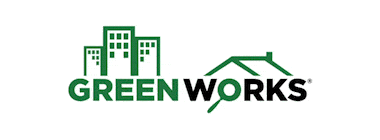Posts
Top 10 Red Flags Found During Home Inspections in Texas
Every buyer conducts a home inspection to know about the structural integrity and efficiency of the house. It’s crucial to notice every single detail mentioned in the home inspection report. In a report prepared by a certified home inspector after a detailed inspection, there can be a few home inspection red flags. Minor issues in the home inspection report can be ignored, but major red flags can raise concerns after a home inspection.

In the reports of home inspections conducted in Texas, common home inspection problems found are related to structural damage and water damage. The following are the ten common red flags that are found in home inspections in Texas:
1. Issues with the Foundation
Sometimes, due to the settling of soil, the foundation gets damaged. Foundation issues can cause uneven floors in the home. Repairs related to the foundation of the home can be costly. If the report has highlighted any issues in the foundation, it’s a red flag.
2. Water Damage in the Building
Water damage in visible areas is easy to notice and fix; however, the water damage behind walls, under floors, or in attics can be problematic. The inspector checks for a musty smell in the building, water stains, and parts that don’t have proper ventilation. These areas are more likely to face water damage and mold infestation. Water damage is the major reason for mold infestation, which is related to health problems, so this one too is a red flag in home inspection.
3. Poor Air Quality in the Home
Least-maintained homes can have compromised air quality. The material used in finishing can emit Volatile Organic Compounds (VOCs), which are harmful to human health. In addition to this, there is a possibility of the presence of formaldehyde due to carpets or curtains. The presence of asbestos fibers and mold spores can also make the air quality poor.
Poor air quality can cause several health issues, which is why it is counted as a red flag inthe home inspection report.
4. Fault in Electrical System
Electrical wiring is usually hidden, so it is not easy to detect issues with the electrical system. The home inspector checks for the load on the circuit. Some outdated circuits can’t meet the requirements according to the load of modern electrical appliances. Any fault in wiring or electrical panels can be problematic in a home.
5. Problem with the drainage System
Poor drainage can lead to the pooling of water around the foundation. It can be a reason for flooding in the basement. Negative grading and blocked gutters are the most common reasons for water to pool around the home. Such issues can become challenging for the residents living in the home.
6. Damages to the Roof
There can be multiple issues with the roof. The roof can be leaky, saggy, or have damaged shingles. The damage to the roof is neither easy nor cheap to maintain. It is advised to know every detail about the roof.
7. Issues with HVAC
The major purpose of an HVAC system is to provide a comfortable living environment. An inefficient HVAC system can consume more energy. In such conditions, either the HVAC needs to be replaced or the user has to pay higher utility bills. Replacing the HVAC system can be costly for the new homeowner.
8. Problems Related to Insulation and Ventilation
Problems with the insulation or ventilation can’t be visible, but can have an impact in the form of inconsistent temperatures in different parts of the home. It can lead to issues with energy efficiency, and poor ventilation can allow mold to grow.
9. Pest or Rodent Infestation
In the suburban areas of Texas, infestations of pests or rodents are more common. Insects like termites can damage the structural components of the building. Once the pests make their place in your home, it can become challenging to get rid of them.
10. Need for Multiple Minor Repairs
A few minor repairs and DIY work are common in all homes. If there are too many minor repairs, it indicates that the home has not been maintained properly. There can be major defects too, emerging sooner in the future.
The home inspection concerns mentioned above are all the big red flags found in a home inspection report, and these should be addressed as a priority.
Conclusion
Major problems in a home, often called red flags during an inspection, should never be ignored. These issues can affect the structural integrity of the property and create an unsafe living environment. A standard home inspection is designed to uncover these concerns before the home is purchased.
GreenWorks Inspections emphasizes the importance of identifying these red flags early. A proper inspection can reveal costly repairs and help buyers make informed decisions. If you’re planning to purchase a new home, don’t skip the inspection—it’s a key step toward protecting your investment.



